Archive
2021
KubaParis
...schläft sich durch

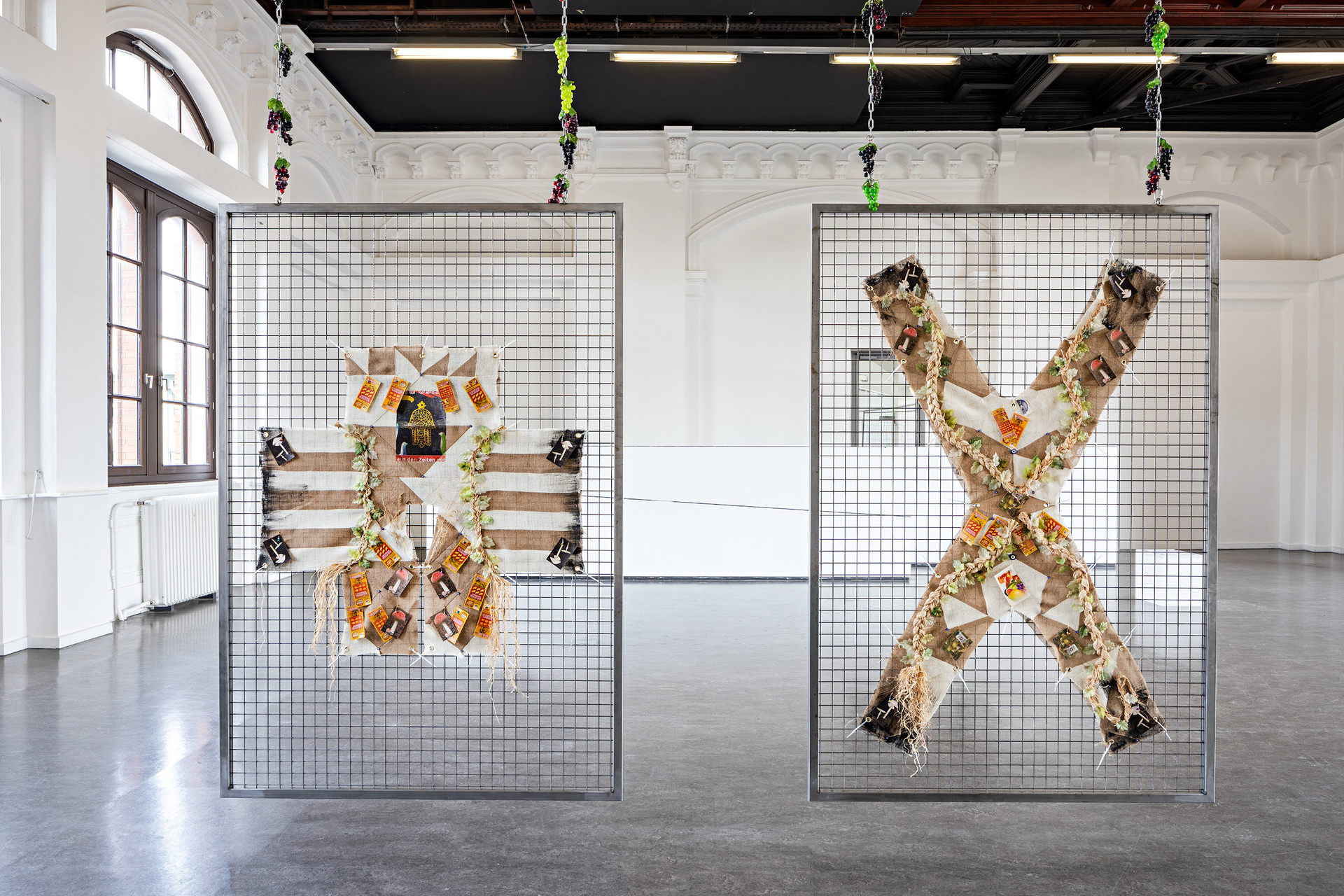
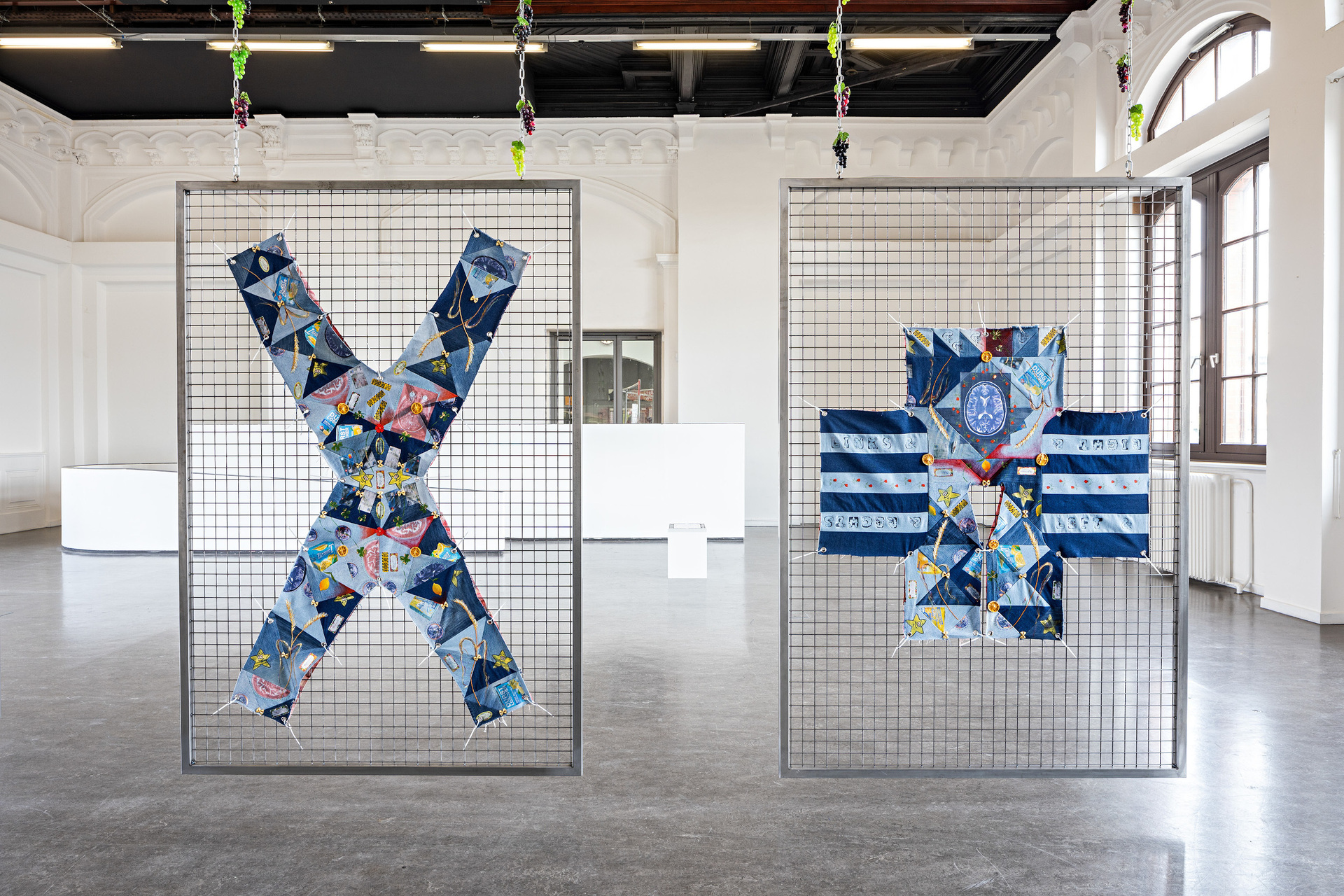
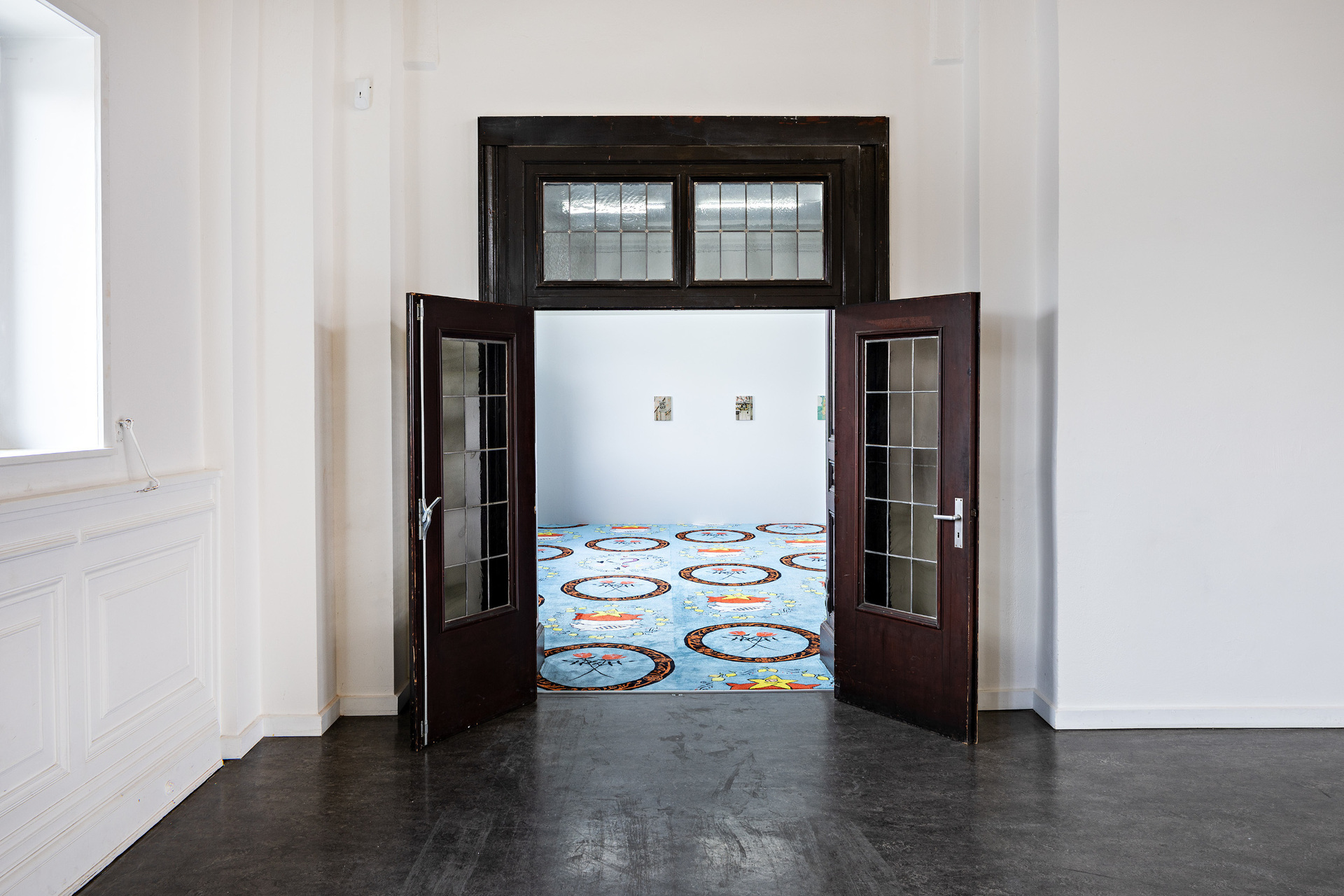
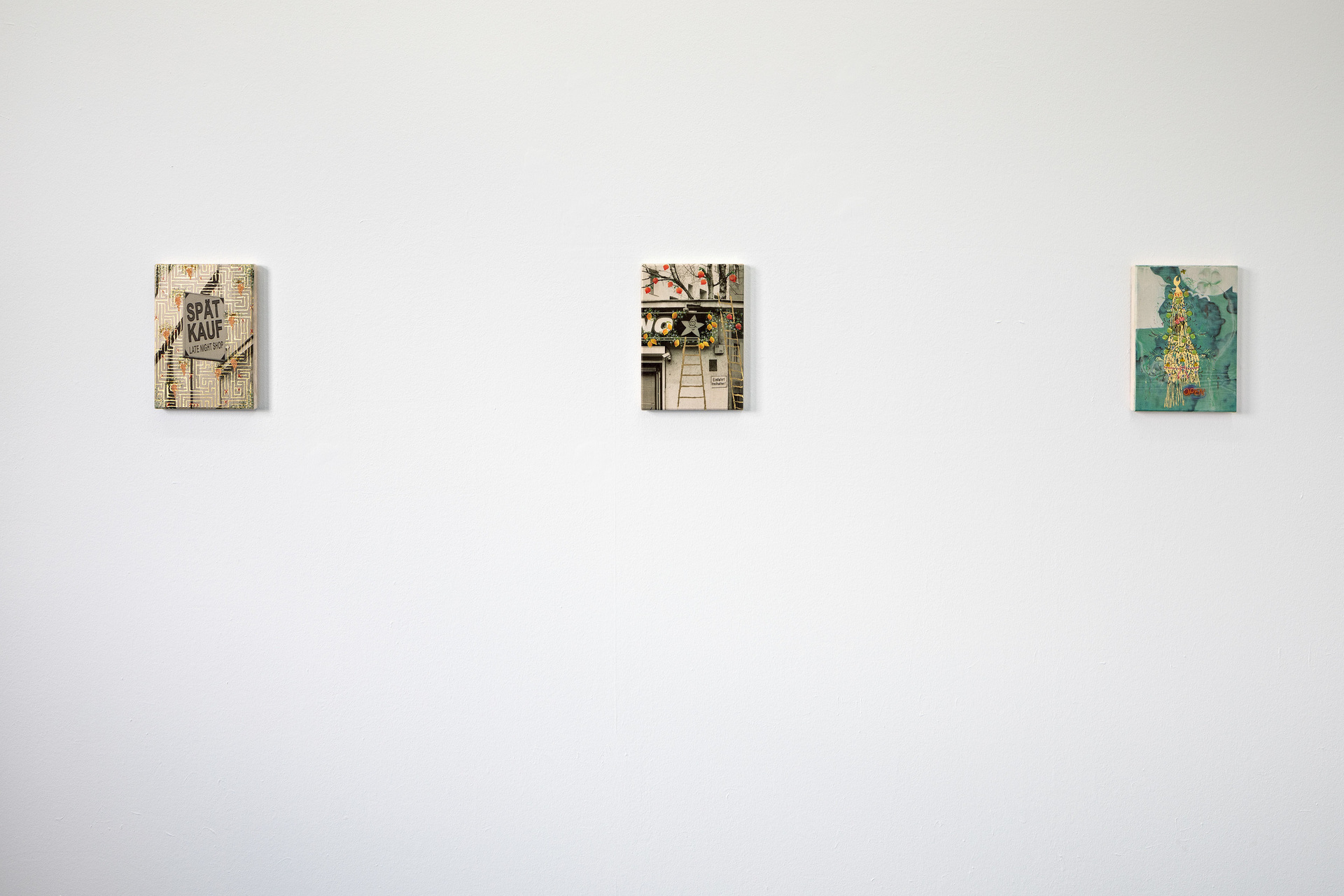

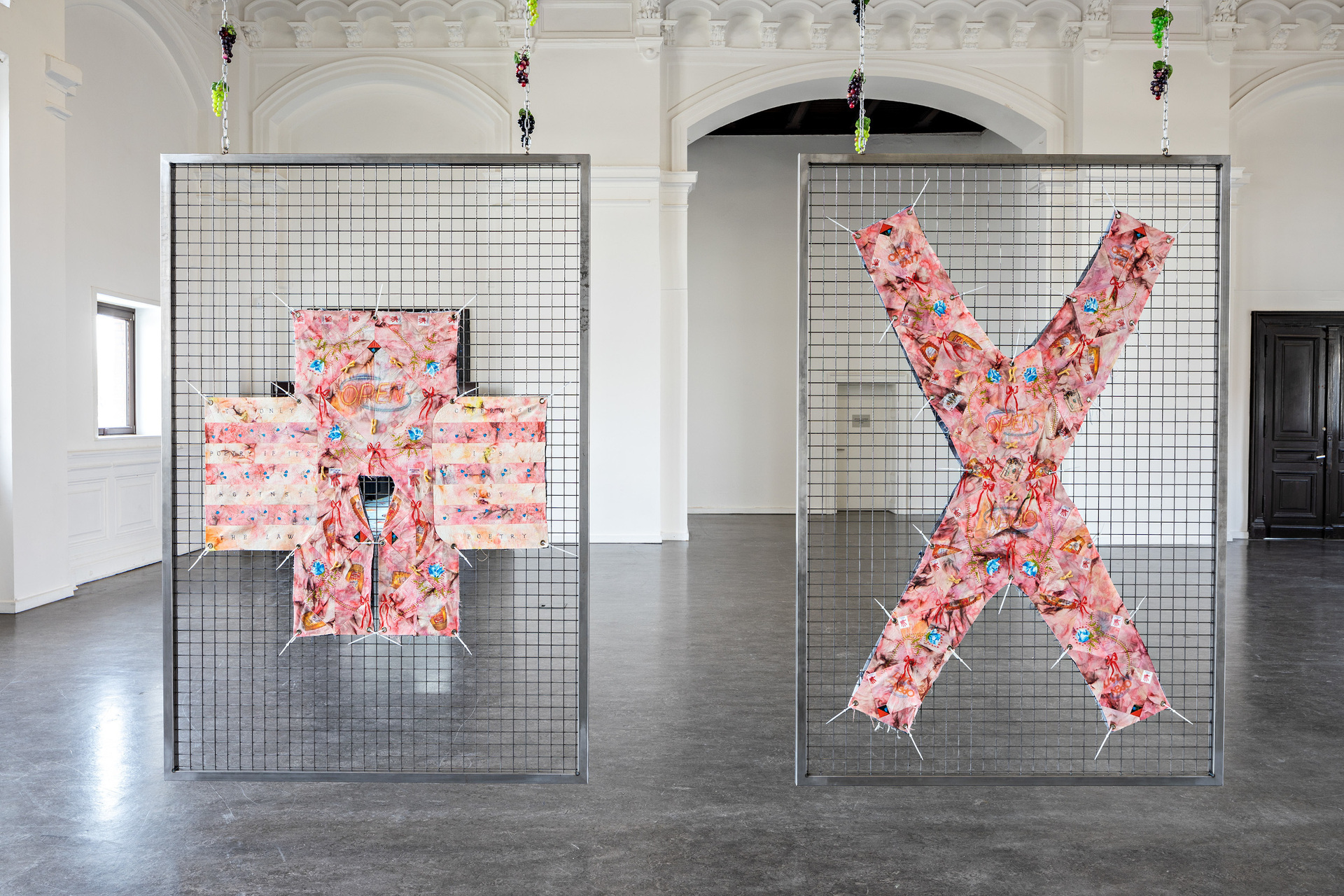
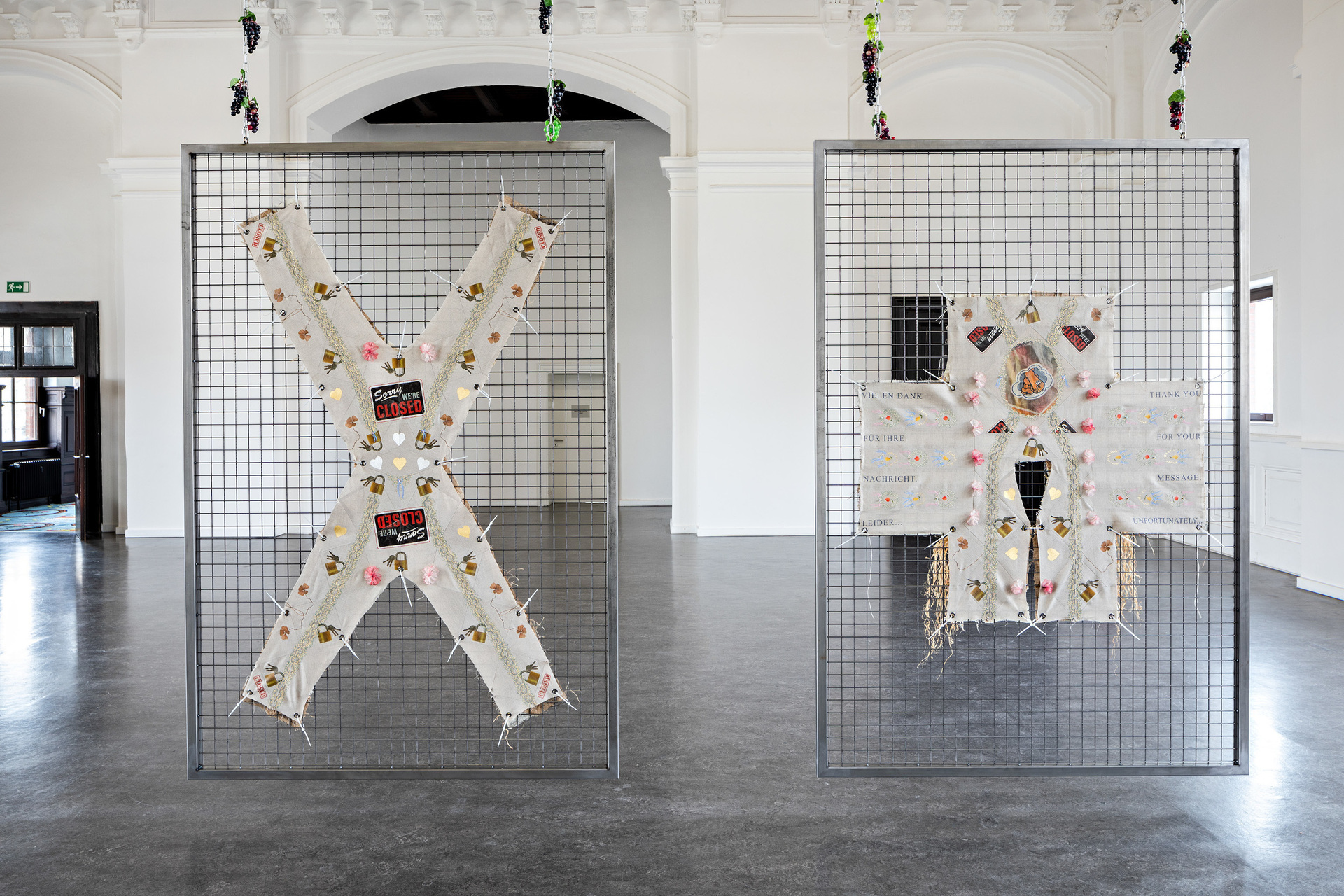

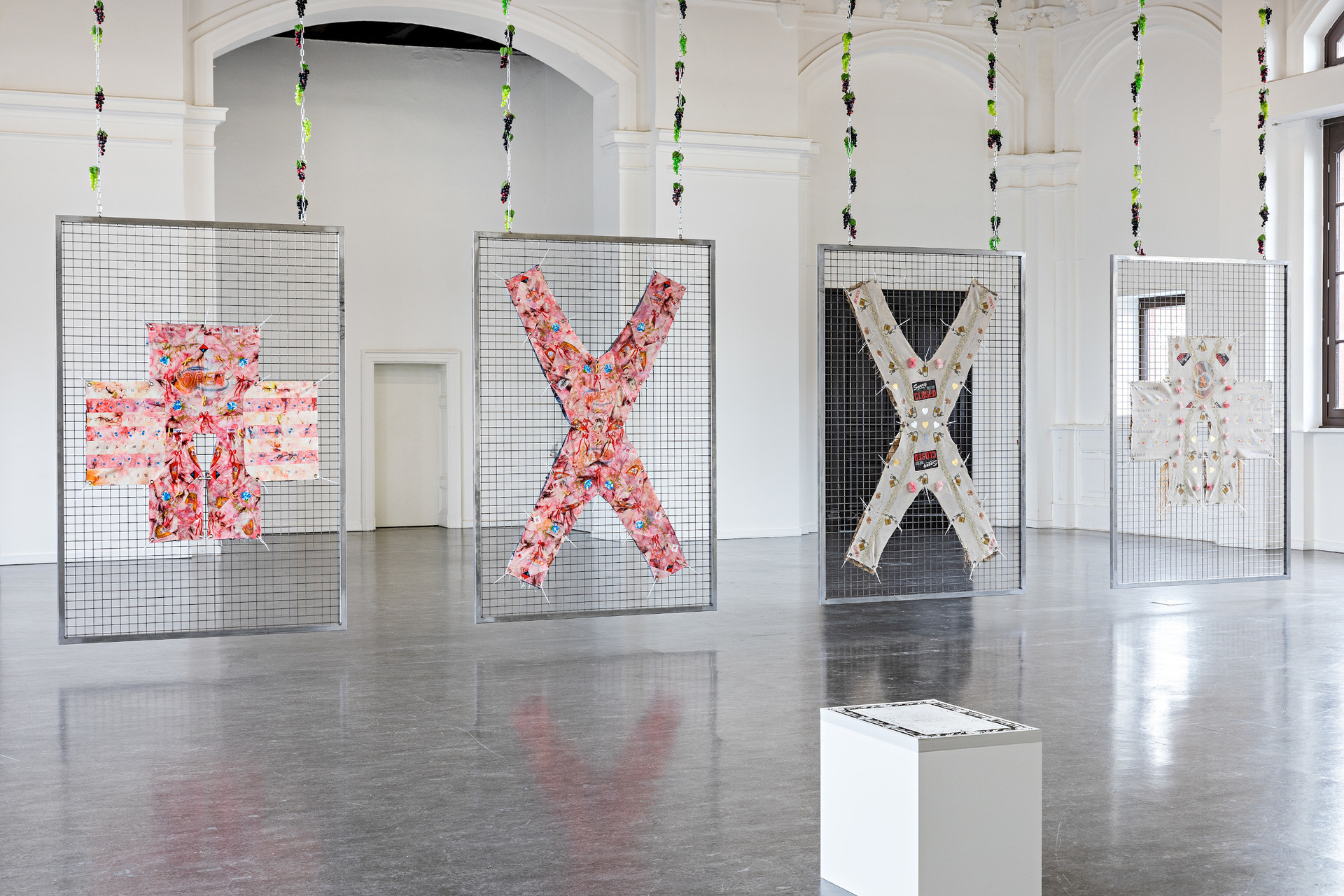

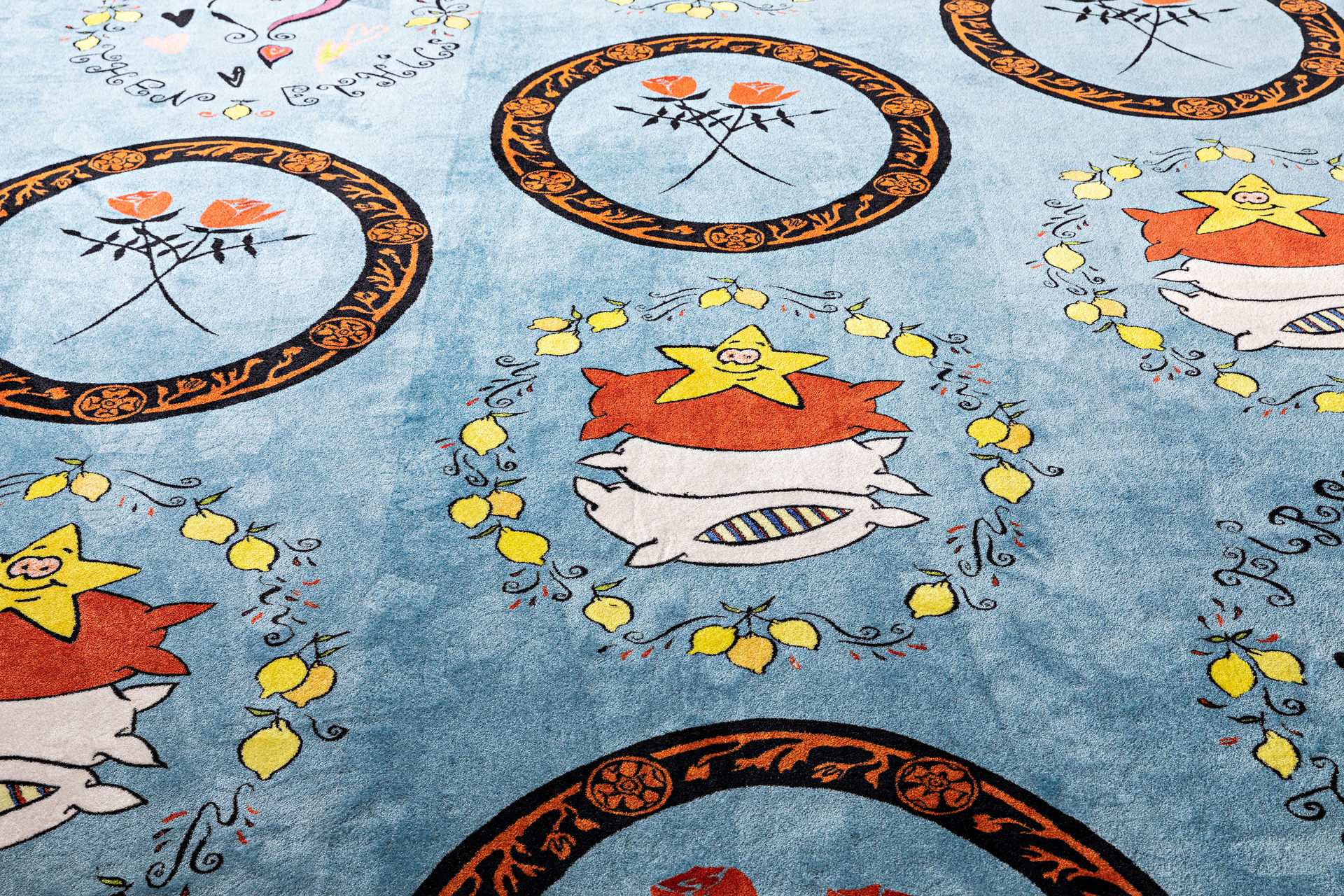
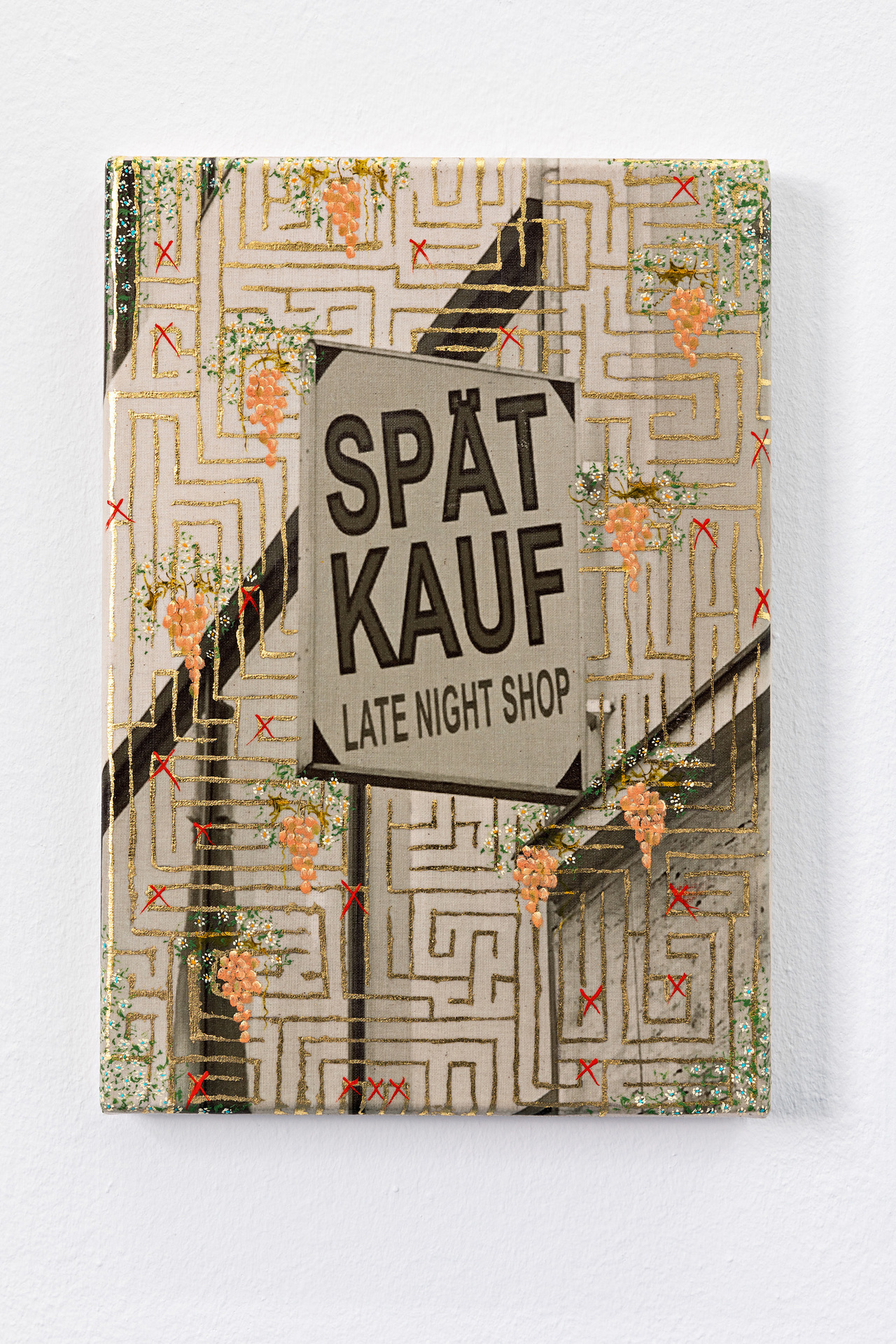
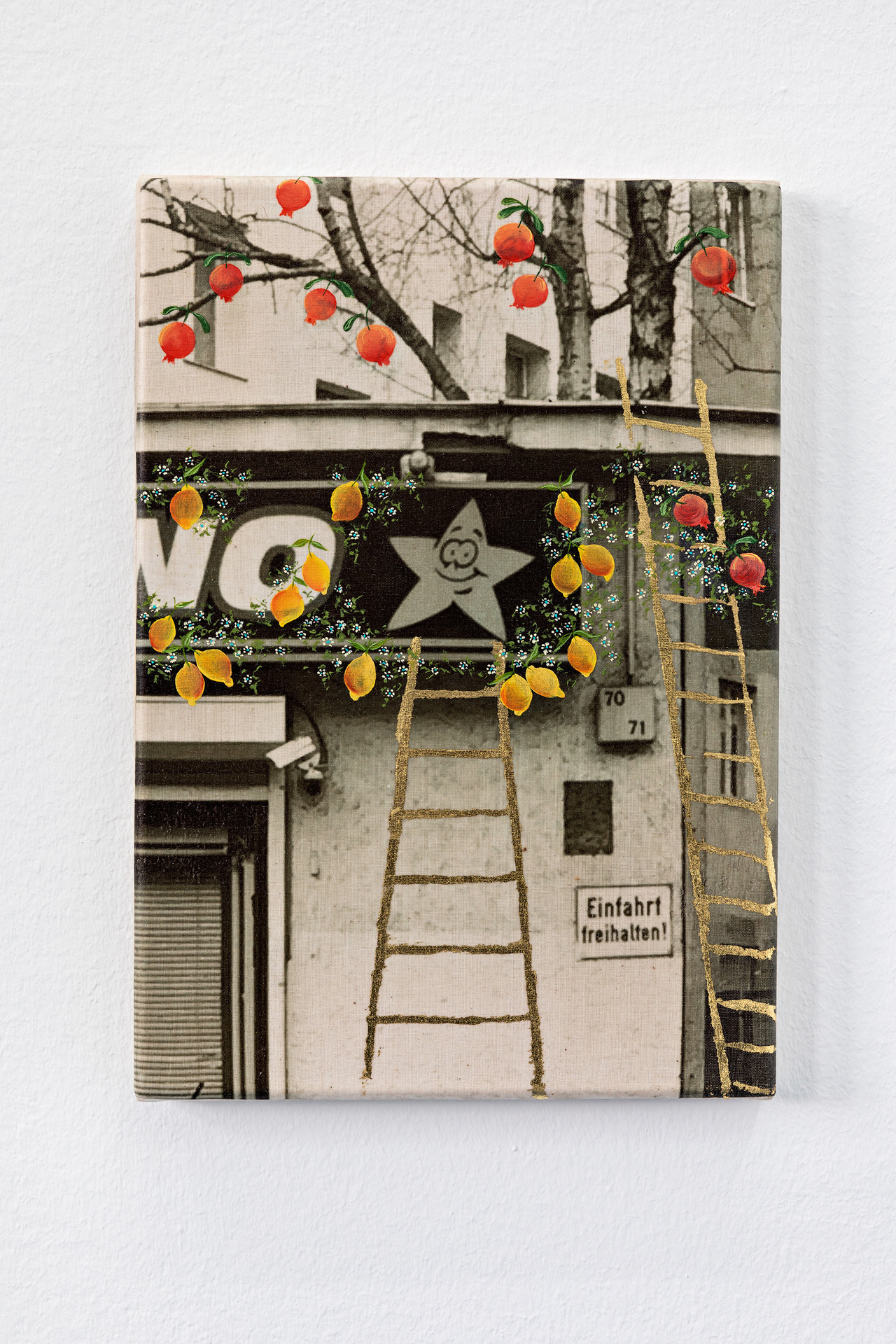
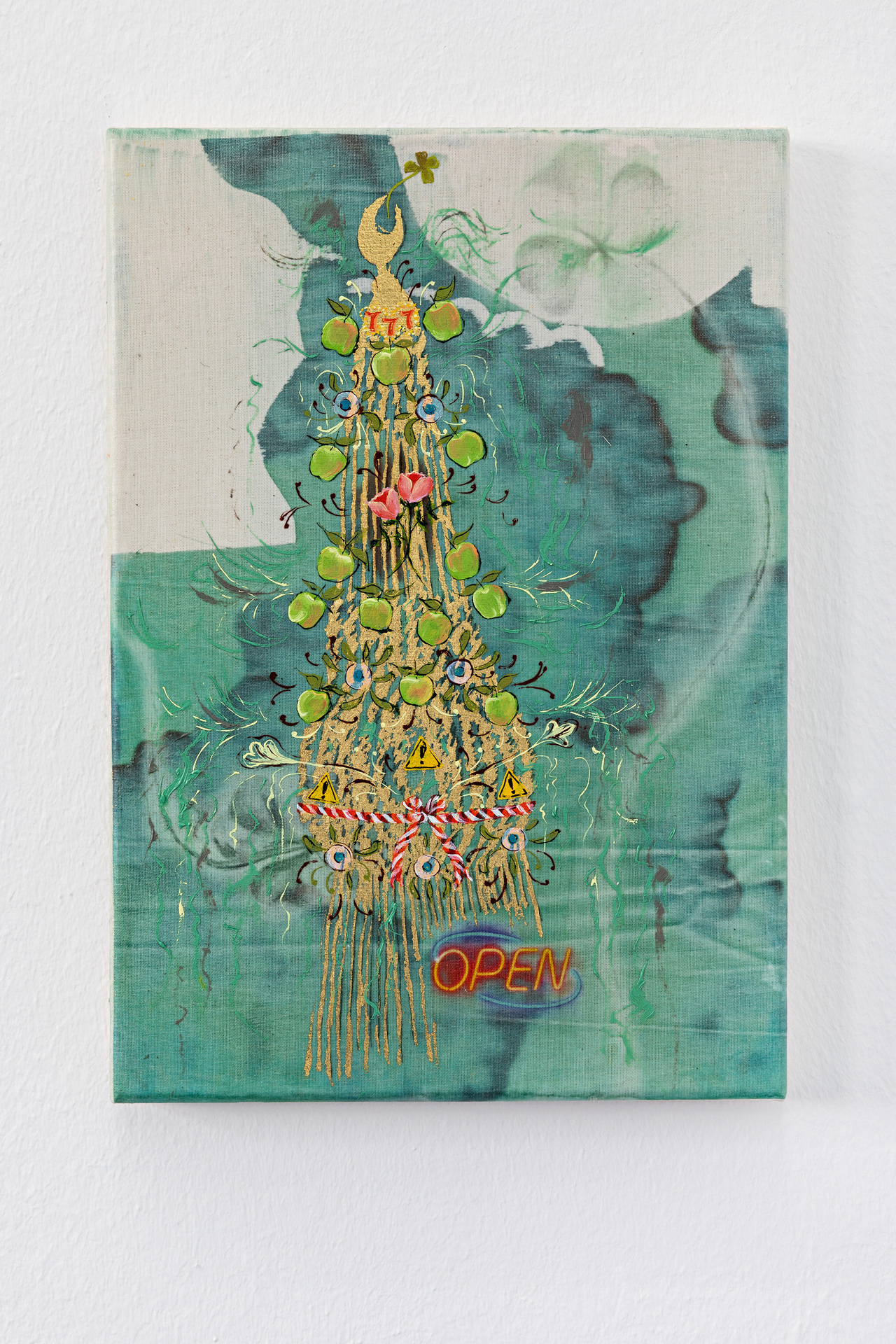


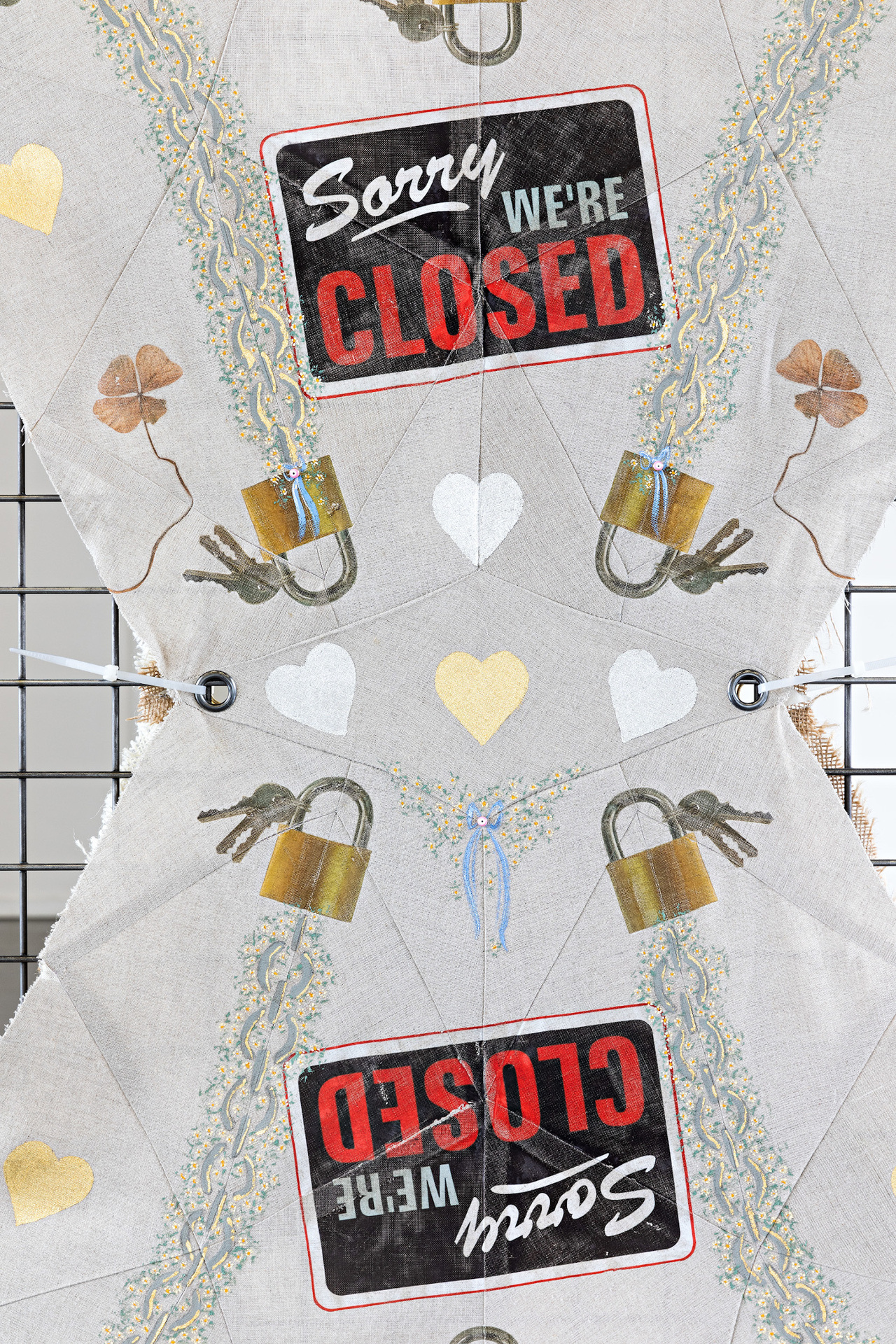
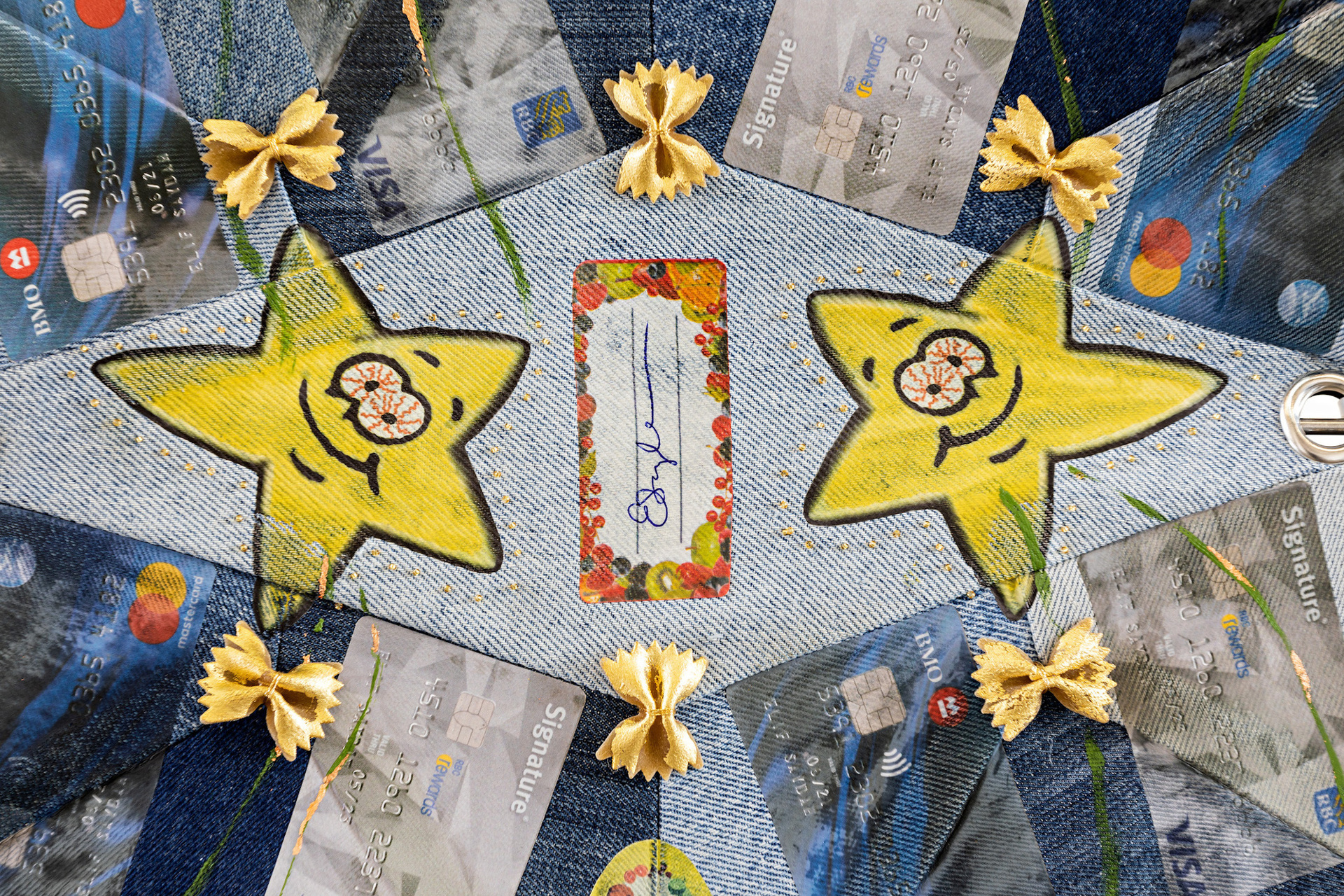
Location
Kunstverein Harburger BahnhofDate
09.04 –05.06.2021Curator
Annette HansPhotography
Fred DottText
In their expanded painting practice, Elif Saydam (*1985, Calgary, Canada, lives in Berlin) addresses the relationship between social categories and the construction of taste. Drawing on decoration as well as the judgements and mechanisms they entail—both implicit and as exclusions—they raise questions around valued labor, identification impulses and social mobility. Saydam’s profound and humorous practice brings forth the connections between aesthetic and social ambivalences and their transgressive potential.
The history of the Kunstverein Harburger Bahnhof serves Saydam well: the former waiting room of 1st and 2nd class passengers of the Hamburg-Harburg train station had also been an intermittent gambling hall for a short time prior to becoming an art institution. Such conflicted histories and divisions are condensed in the back room, the so-called Blue Saloon, which had been reserved for nobility if not the emperor respectively, as the story is told. Here, Saydam converts the space into a chimeric hybrid through the intervention of a fluffy Spielhalle carpet, referencing the exclusivity of the room’s past and the original hand-painted motifs of the hall’s ceiling, but also the purgatory often found near the one-armed bandits in the back of any old Kneipe. So much of living is about waiting; waiting to get rich quick, waiting for a train which may never come.
Do you know and remember the story of The Wizard of Oz? The fairy tale of four misfits searching for something they believe they lack? Oz himself is a pretender, tricking everyone with illusions that have nothing to do with the little man he turns out to be. It’s a children’s story—and an attempt at a moral fable. Everything turns out fine in the end, a fiction with a finite resolution. In reality, this search goes on forever and ever and ever, stretching to and beyond the limits, loaded with false promises lingering around continuously. How these promises feed into labor and consumption, how they relate to values, taste and class are instead the structural motor that keeps the system going, a perpetual motion machine. New labor forms and new consumers are generated constantly, but the roles that are to be fulfilled to reiterate the inherent logics are all set and manifest in architecture and symbols as well.
Saydam’s exhibition laments the highs and lows and in-betweens of social groupings and their aesthetic categorizations, transforming the Kunstverein’s main space into a scene of crucifixion for a royal suit of characters. Instead of religious idols, however, costumes embodying consumer role models are sewn, painted, adorned and flayed. In form, these reference Varvara Stepanova’s Constructivist workers clothing—prodezodezhda and sportodezhda—which were designed to outfit new ways of living in a post-revolutionary society. Within them the contradictions between desires and the perpetuation of performance, the tokens of what is needed to perform to succeed are literally being stretched out. It is indeed these promises for the good life—all geared towards ‘winning’—that constantly recur in Saydam’s works and the unsustainable exhaustion that comes along with it as well.
In their painterly interventions this ambivalence is played out in the juxtaposition of abstracted, cute-ified symbols and a more traditional use of imagery. Therein value is being questioned between trash and adornment. Imagine yourself in front of a fruit machine: How are grapes depicted and what do they represent? Imagine yourself in a royal palace, or the Sagrada Familia cathedral: What do grapes mean here? The treatment of symbols, objects etc., the labor and the material directed into them, is incorporated into the aesthetic perception. These affects tell something about how the world is constructed. And as it is heavily structured by ups and downs, the granting and depriving of accessibility and opportunities speak to this too. Saydam plays out these ambivalences for judgement of their works between front and back room, ceiling and floor.
Curated by Annette Hans.
The exhibition will be accompanied by a publication.
Elif Saydam studied in Montréal, Canada, and Frankfurt am Main, Germany.
Their works have been shown internationally in solo and group exhibitions at Kunsthalle Bern, Switzerland (2021), Tanya Leighton, Berlin (2020), Galerie Rüdiger Schöttle, Munich (2020), KunstWerke, Berlin (2018), Kunstverein Nürnberg—Albrecht Dürer Gesellschaft, Nuremberg (2016), and MMK Museum for Modern Art, Frankfurt am Main (2016), among others. Saydam has also been part of various radio and performance productions and in 2018 co-wrote the novel Desecration of Descent with Vera Palme (Broken Dimanche Press).
The program of Kunstverein Harburger Bahnhof is made possible by:
Behörde für Kultur und Medien der Freien und Hansestadt Hamburg & Liebelt-Stiftung, Hamburg.
The exhibition and catalogue of Elif Saydam are supported by the Alfried Krupp von Bohlen und Halbach-Stiftung under its support prize "Catalogues for Young Artists".
We acknowledge the support of the Canada Council for the Arts.
The project is part of Canada's culture program as Guest of Honour presentation at the Frankfurt Book Fair in 2021. We acknowledge the support of the Embassy of Canada.
Kindly supported by Gerüstbau Bartels.
Annette Hans